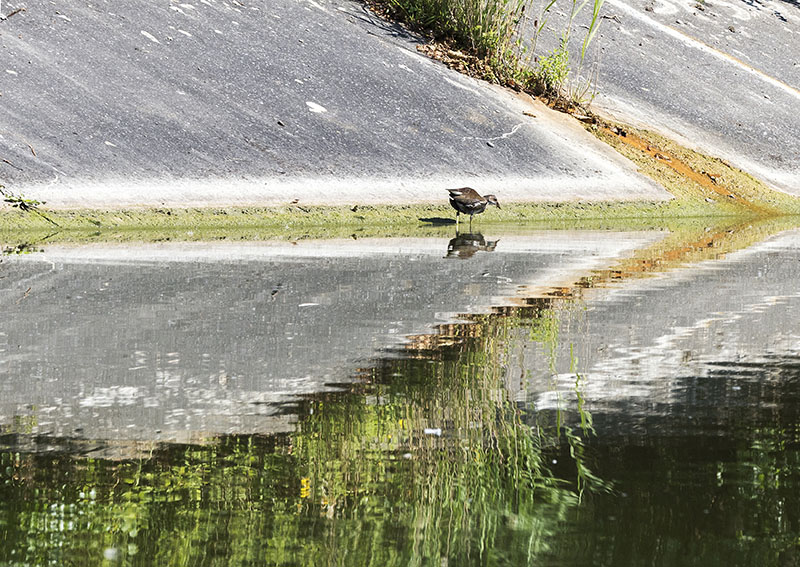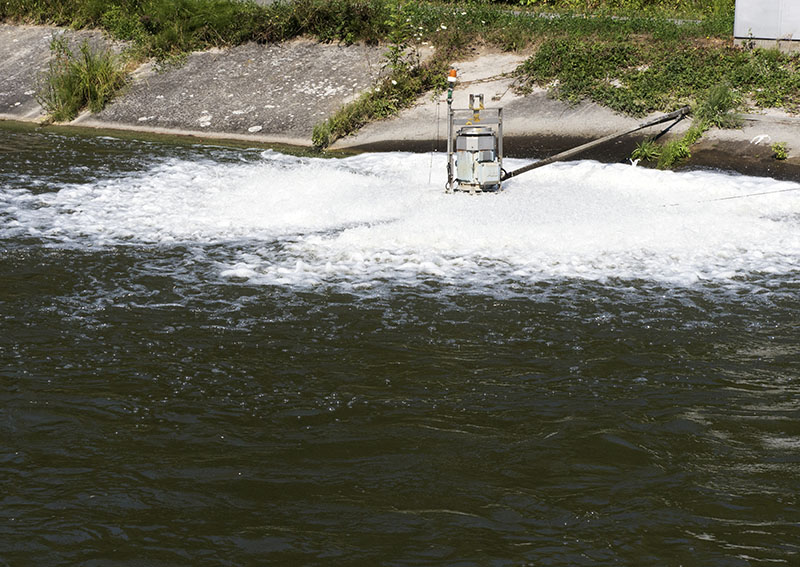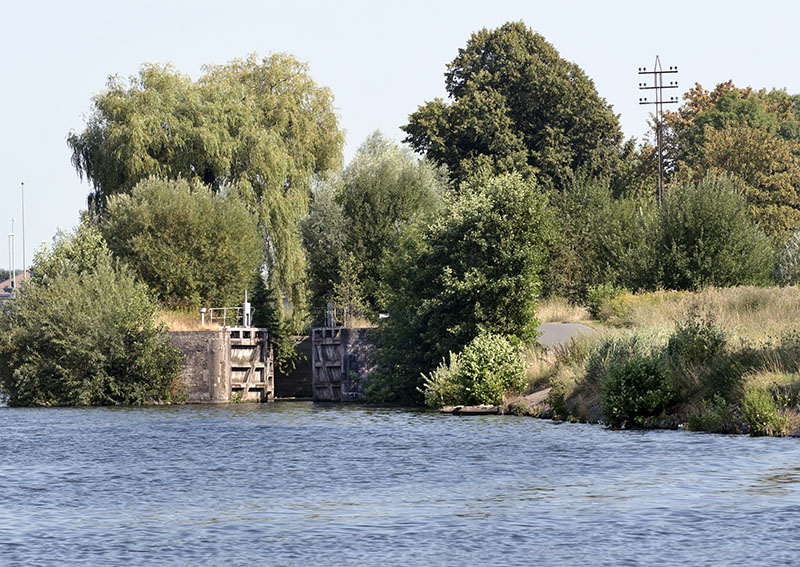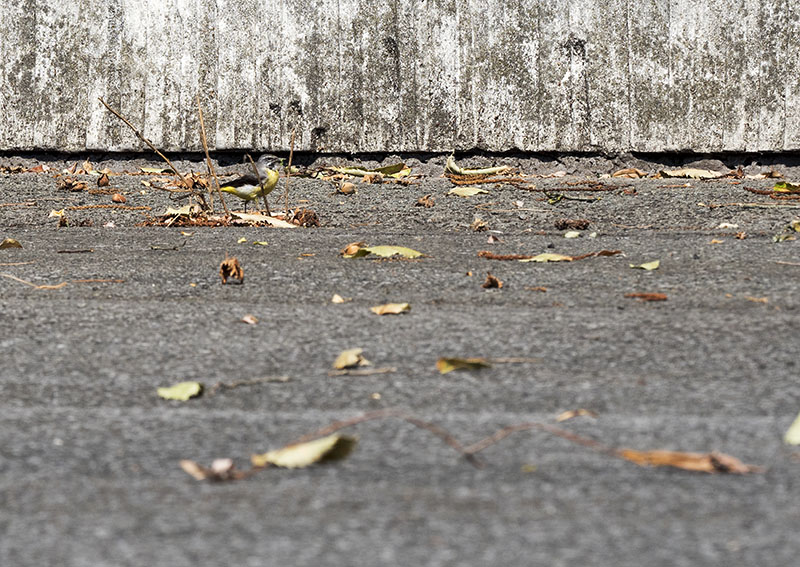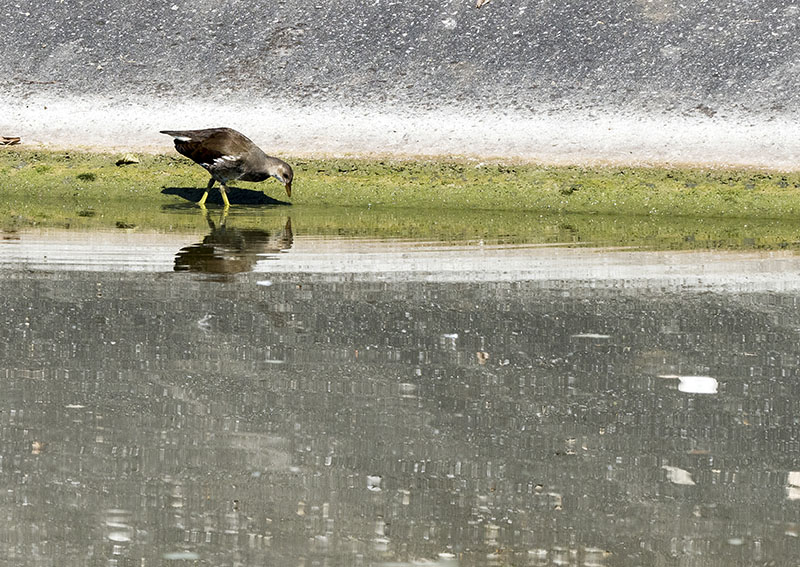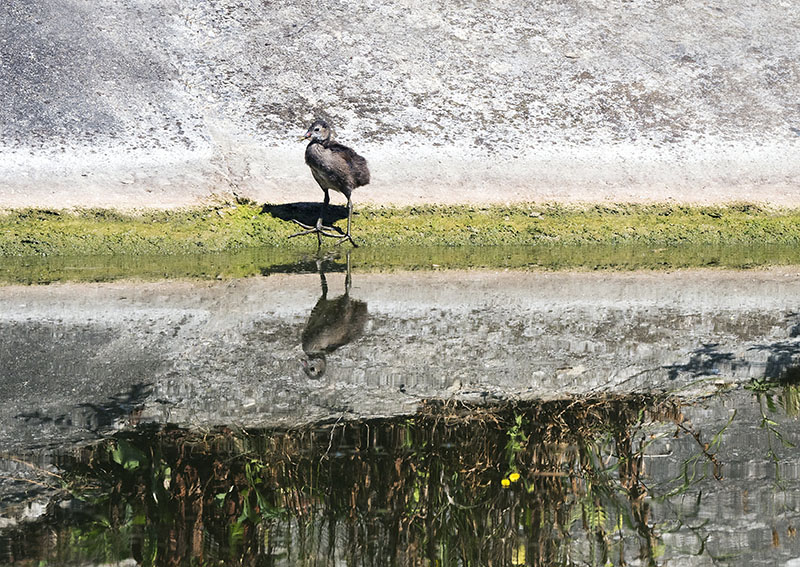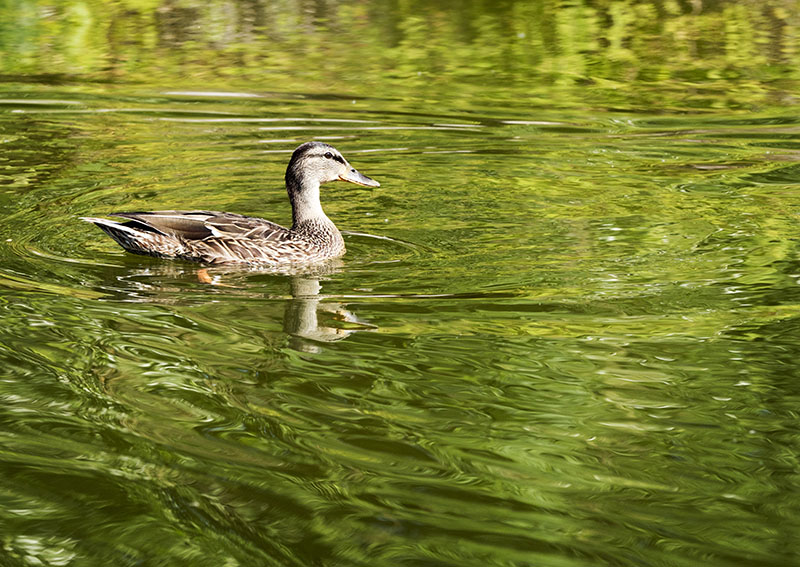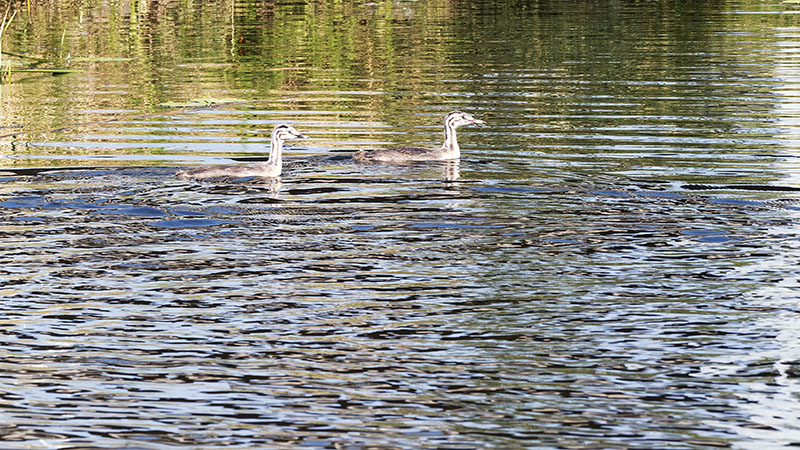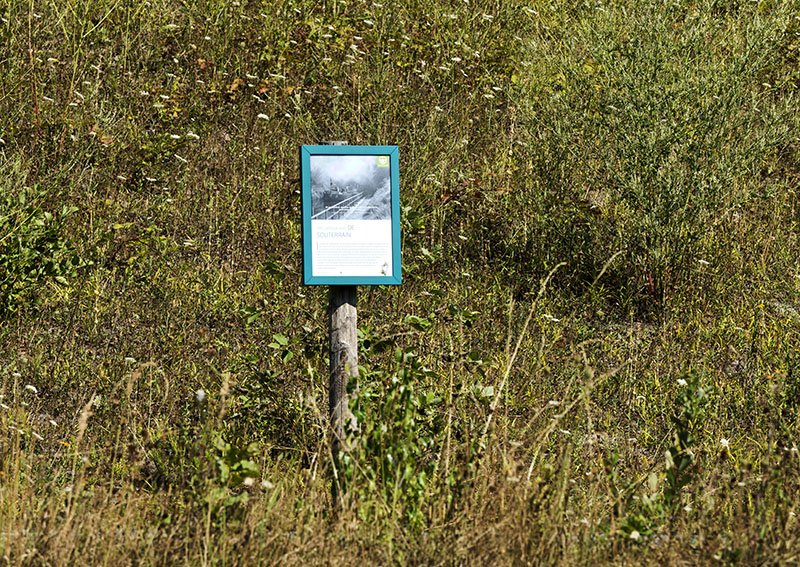The part required for the running of the engine arrived via courier at the mooring dock just after lunch.
By mid – afternoon, our sojourn along this not oft traversed section of water by pleasure boats commenced and, with the three locks at Kortrijk only operating between 9am and 4pm, it was a short run with passage through only two of the locks prior to the township.
An aerator was in place to ensure a healthy waterway.
At lock 8 one espied the original lock hidden behind undergrowth.
Peaceful, a few new species of birds sighted by the time we arrived at our night’s destination.
Here water lilies had claimed the banks’ edges where birds dined and bathed in the afternoon glow.
With no moorings provided for a night’s stay at the actual locks, Gratis was moored just past the last of the bridges about a kilometre before Lock 9.
Just a word to advise that when taking this waterway be prepared for a relaxing meander and expect a day to do the 16 or so km as the locks are slow and gentle.
Interesting Canal History
- On a much narrower scale than that of today, as barges increased in size, the early 1970s saw a massive undertaking as the waterway was both widened and deepened.
- The tunnel itself became unstable once the vessel tonnage limit was raised to 1350 tonnes and has since closed.
- Much of the old waterway became a channel running alongside the current canal, and a lock or two left to the passage of time as they became engulfed by vegetation.
- Today, the canal is fed by the Scheldt, but despite the much larger locks elsewhere on the waterway, the three at Kortrijk have been classified under the label of industrial heritage which makes it impossible for vessels in excess of 300 tonnes to exit the canal into the Leie.
